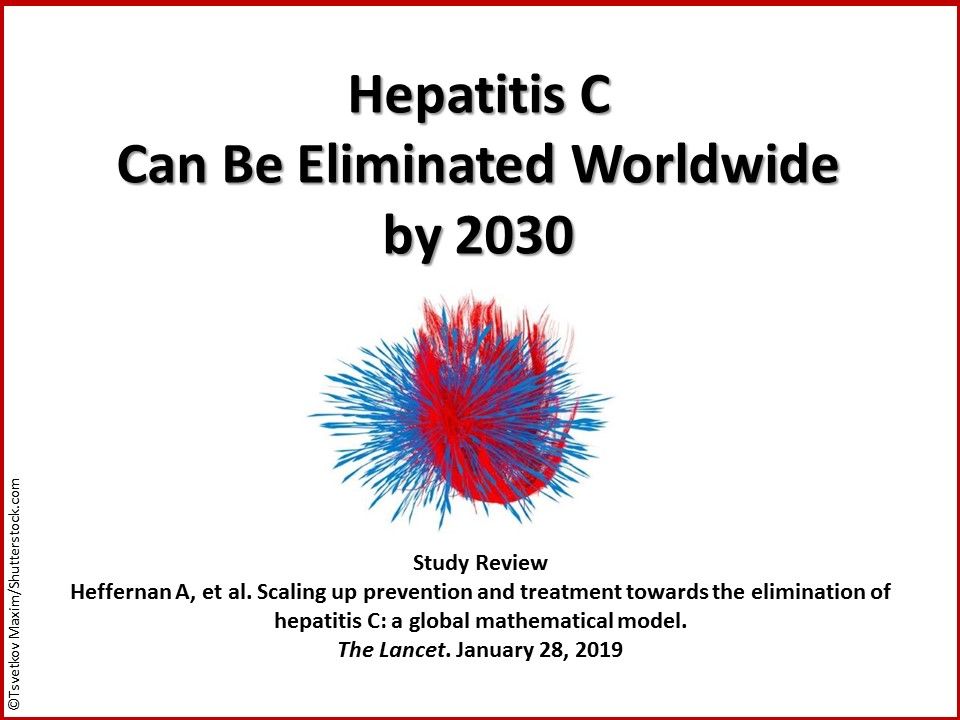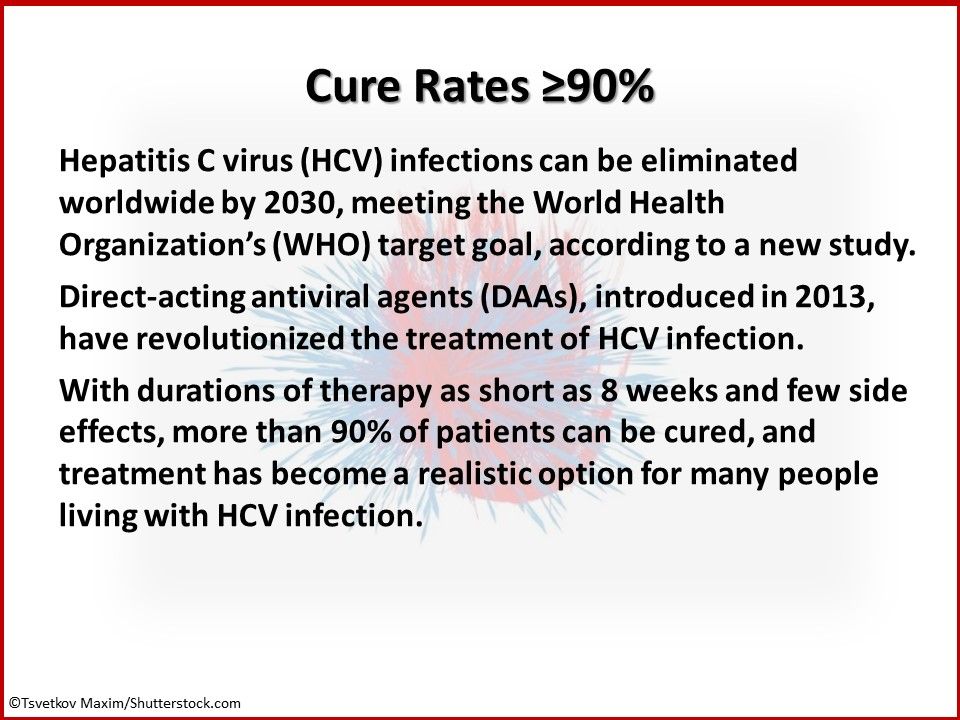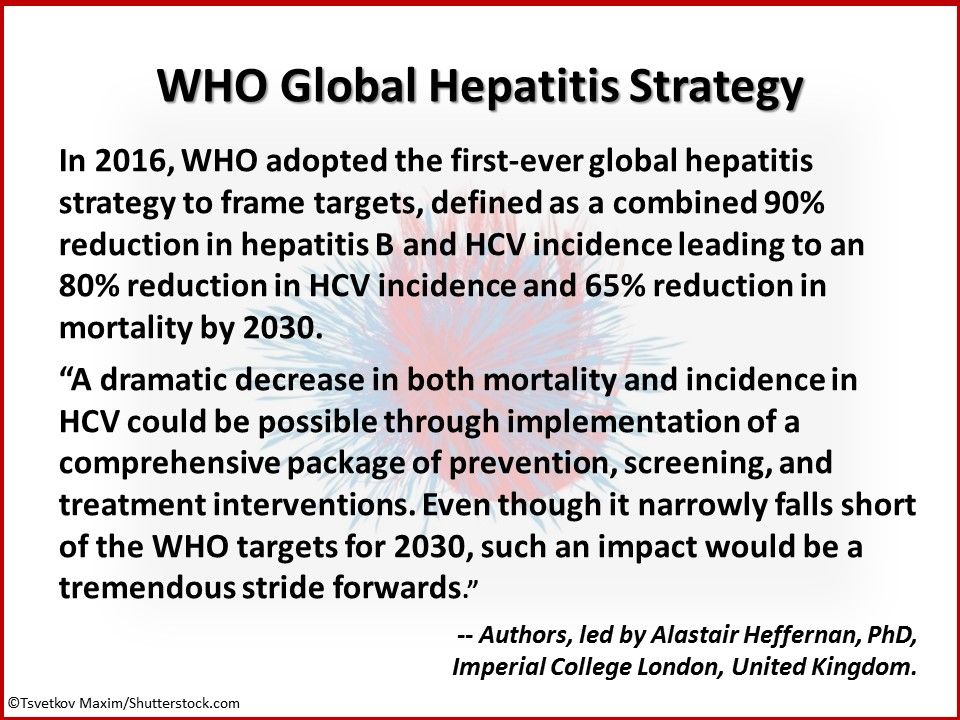© 2025 MJH Life Sciences™ , Patient Care Online – Primary Care News and Clinical Resources. All rights reserved.
Hep C Can Be Eliminated by 2030, Worldwide
A new study models the impact of 4 key public health interventions on global HCV burden to see if WHO elimination targets are realistic.

Hepatitis C can be elimated worldwide by 2030, meeting the World Health Organization's target goal for eradication, according to a new study.

Cure Rates ≥90%. The revolutionary direct-acting antiviral agents (DAAs) have completely changed the treatment of HCV infection. For some a course of therapy is as short as 8 weeks and side effects are very few. Today more than 90% of patients can be cured, and treatment has become a realistic option for many people living with HCV infection.

WHO Global Hepatitis Strategy. WHO framed targets in 2016: 90% reduction in HBV and HCV incidence leading to an 80% reduction in HCV incidence and 65% reduction in mortality by 2030. Study authors note that even though this outcome falls slightly short of WHO targets, it would reflect significant progress. The researchers published their results on January 28, 2019 in The Lancet.

Study Model Predicts Incidence, Mortality. The mathematical model developed takes into account 4 intervention scenarios: Comprehensive blood safety and infection control measures; harm reduction services for people who inject drugs; treatment for all patients currently diagnosed with HCV infection; expansion of HCV testing so that 90% of those infected with HCV are diagnosed and offered treatment by 2030.

Reinfection Risk, Prevention Factored In. The model projects that by 2030, interventions that reduce risk of transmission in the non-PWID population by 80% and increase coverage of harm reduction services to 40% of PWID could avert 14.1 million new infections. Timely use of DAAs in all countries could prevent 640,000 deaths from cirrhosis and liver cancer.

Prevention, Screening, Treamtent. A comprehensive approach could reduce HCV incidence by 81%, mortality by 61%. According to the authors, this reaches WHO HCV incidence reduction target of 80%, but is just short of the mortality reduction target of 65%, which could be reached by 2032. “Reducing global burden depends upon success of prevention interventions, implementation of outreach screening and progress made in key high-burden countries, including China, India and Pakistan," they note.

Necessary Conditions -- and Cost. Study authors underscore conditions necessary to reduce the burden of HCV:
• Further improvements in blood safety and infection control
• Expansion or creation of PWID harm reduction services
• Extensive screening for HCV with concomitant treatment for all
Cost? Implementing the WHO strategy would cost the US $11.9 billion for the period between 2016 and 2021.

